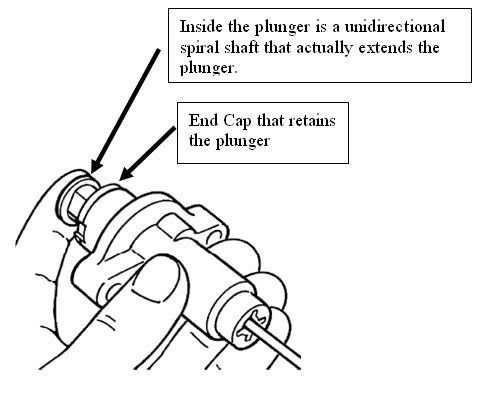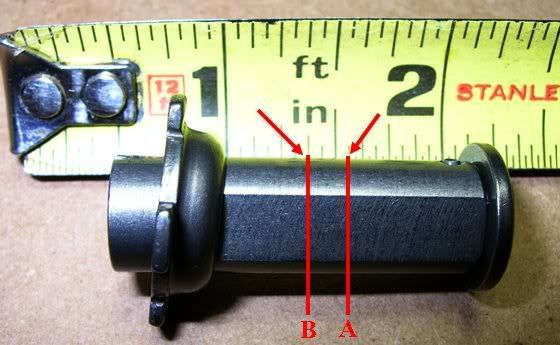I'm not surprised that some people have no problem with the early CCTs and others did. The CCT could be made with a varying degree of spring tension. The new designs of the CCT don't have as much plunger extension at a normal setting because the 'nose' of the housing is longer and the spring seems to be setup different.
The following is an edited post about the original Gen I CCT that I wrote a long time ago:
The cam chain tensioner is built as a touchy feely part without absolute assembly specs.
When comparing a new tensioner to the old tensioner you should be feeling for spring tension differences with plunger extended between 50% and 75% of the total plunger length, there should be smooth operation of the plunger with uniform tension....
...The total cam chain tensioner travel is ~1.25 inches. The tensioner shafts I've looked at all had shiny wear marks around the 5/8” extension point to the final wear marks around the 7/8” extension point. When the cam chain was new, the tensioner shaft was extended 5/8”.
When my old CCT shaft is released to the 5/8 length I would guess the spring tension is roughly 200 grams. When the tensioner is extended to the 7/8” point I would guess the spring tension is not more than 20 grams. The more worn the chain became, the less able the tensioner was to take up the slack. The important area to compare spring tension is from just less than 1/2 way extended to ~3/4 way extended. As a cam chain wears you would like the tensioner to have good pressure on the cam chain slipper to reduce slack.
Normal wear location and length, the plunger starts out extended to band A and takes up slack until extended to band B where the spring tension drops off to near zero.
ahamlin01 sent me his old CCT and his CCT had the same extension and wear that mine had --but-- his worn CCT had more tension than mine did along the whole plunger travel.
I was surprised to find that the spring in the CCT is not in compression, it is wound up like a clock when the CCT is assembled. The following really needs pixs to save a lot of words (still no pixs).
The CCT rectangular rod goes through an end cap that is retained by a circlip. The end cap has 4 tabs (see the left end in the picture above), with one tab wider than the others to force alignment of the rod within the CCT body
[this is not true with later Gen 1 CCTs, they changed the part a bit]. When putting the CCT together the rod has to be fully extended making it too long to let the end cap tabs reach down into the slots in the CCT body. As you turn the tensioner screw to retract the rod it winds up the spring. As the rod shortens it lets the end cap tabs engage the slots with enough room for the circlip to slip into the ring groove. Depending on how I hold the rod and how deeply the spiral shaft is initially engaged into the center of the rod, the spring tension can end up anyplace from almost nothing to very strong after the circlip is installed. The key point here is that this assembly operation is variable and has a direct relationship to the final spring force of the CCT. During assembly, one turn + or - of the tensioner rod & end cap makes a significant difference in the final spring force. Two full turns is like night and day in spring force. Because the end cap can only fit one way it forces the tensioner rod to complete a full 360 degree rotation between end cap tab engagements. How far the spiral shaft was initially engaged onto the rod will determine the actual number of turns of the rod before the circlip can be installed which determines final spring force.

The Engineering part of me wants to believe that there is a minimum and maximum spring force specification that falls within one full turn of the retraction screw. The Manufacturing Engineer in me wants to believe they have a fixture which will always results in a consistent number of turns before the circlip goes on. The Quality part of me wants to believe that all the CCTs are tested to verify conformance. The realist in me acknowledges that most likely there is no assembly jig and the CCTs are only audited, not 100% tested









